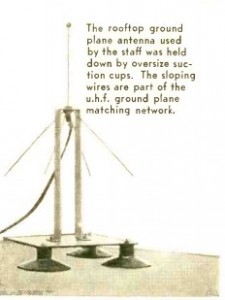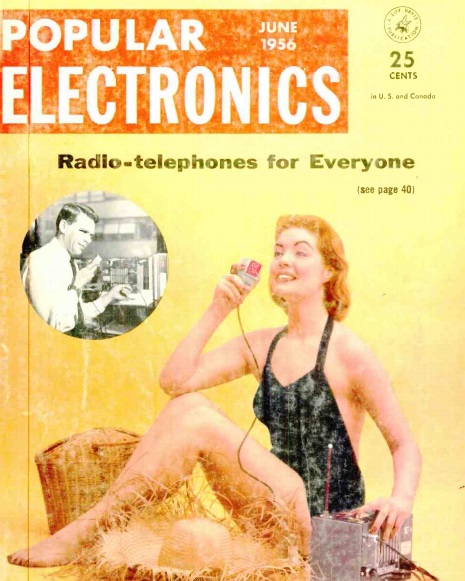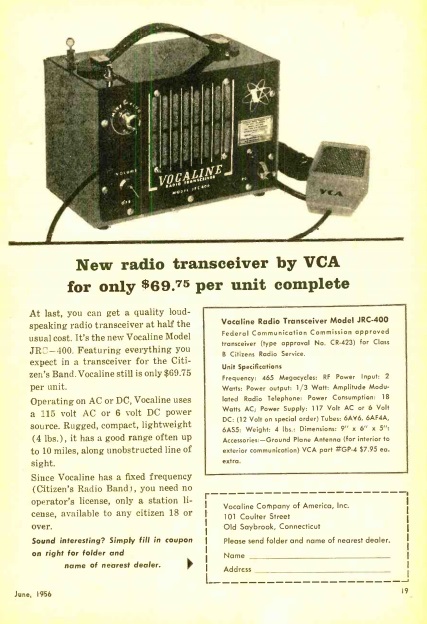Sixty years ago, the familiar Class D Citizens Band at 27 MHz was still a couple of years away. Class B Citizens Band on 465 MHz had been authorized for a number of years, but as the June 1956 issue of Popular Electronics pointed out, the service hadn’t gained traction due to equipment requirements:
Equipment for the Citizens band (radio -telephone) must meet specifications set forth by the Federal Communications Commission. To pass these specifications, the equipment must be examined and ap- proved by the FCC in its laboratories. Because of this cumbersome arrange- ment (although fully justified), the design of Citizens radio equipment has for a number of years taken a back seat. The ice has been broken by the Vocaline Model JRC-400 transceiver, which brings Citizens band communication facilities within the reach of everyone’s pocket. After a manufacturer secures FCC approval, he may then produce identical units on an assembly line basis.
The magazine promised further reviews in upcoming issues, but included some observations about the Vocaline unit, which could operate on either 117 volts AC or 6 volts DC. The magazine’s field test showed 100% reliable ranges of 1.5 miles in a metropolitan area or 3 miles in open areas. Out in the country, weak signals were fully readable up to six miles.
 The same issue of the magazine carried this ad for the transceiver, showing its retail price of $69.75. The antenna was available separately, and consisted of a quarter-wave ground plane which could be affixed to a vehicle’s roof with large suction cups.
The same issue of the magazine carried this ad for the transceiver, showing its retail price of $69.75. The antenna was available separately, and consisted of a quarter-wave ground plane which could be affixed to a vehicle’s roof with large suction cups.
A schematic of the set is available online and reveals that the set used three tubes. A 6AF4 served as superegenerative detector and the oscillator for the transmitter. For audio on both transmit and receive, a 6AV6 and 6AS5 were used. The power supply included a vibrator for DC operation, and included a selenium rectifier.
Click Here For Today’s Ripley’s Believe It Or Not Cartoon
![]()


